Blog

The Colors of Spring
Every week there is more color in my neighborhood. Can you find some of these near you?
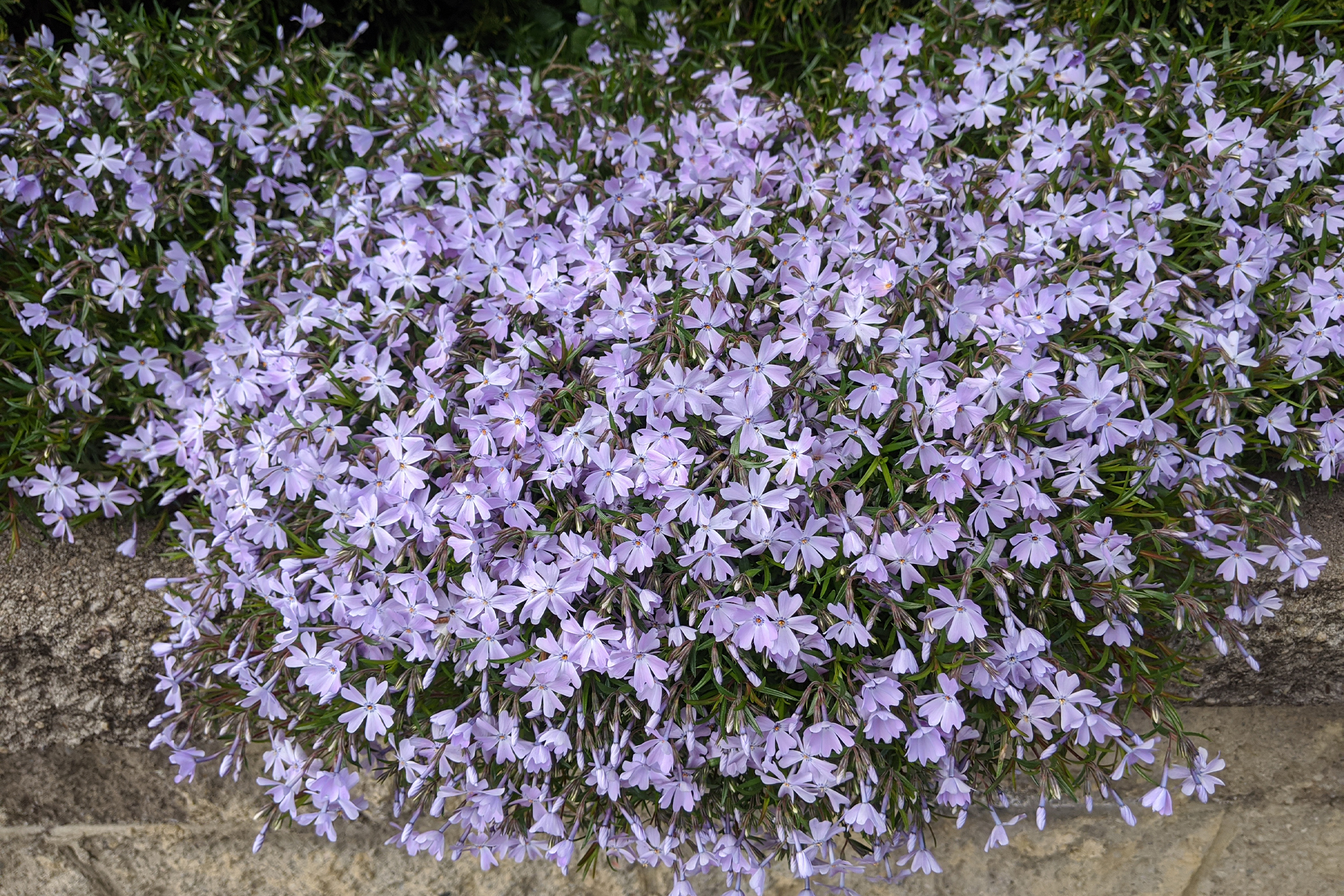
Phlox subulata has been blooming in my neighborhood and I want to bring attention to it today. This U.S. native is widely cultivated. I love this plant for the way that it pours over steps or rocks and for its various colored blooms. It has long lasting blooms, having been open for a month!
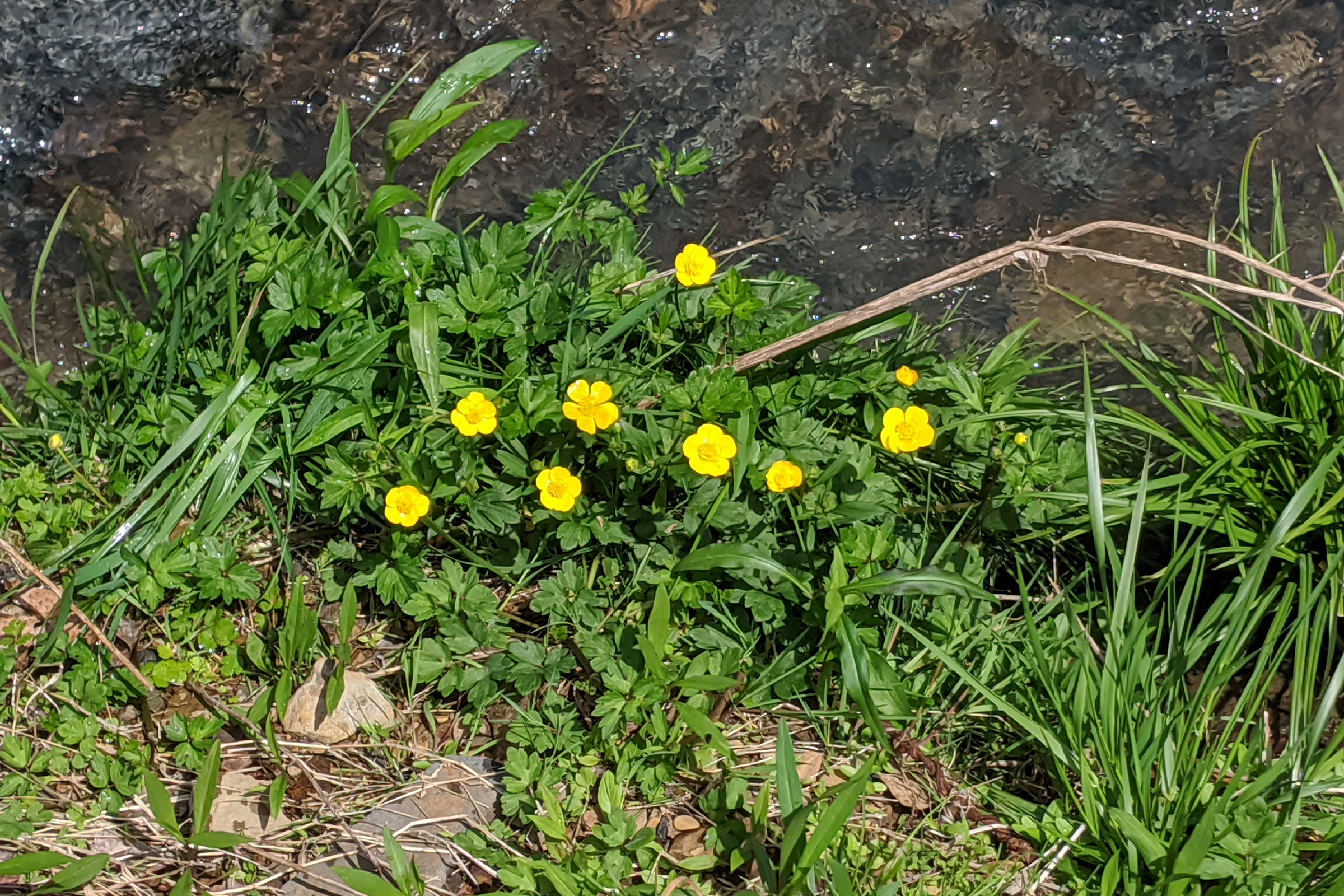
Growing near a stream nearby I found a cluster of buttercups. St. Anthony’s turnip (Ranunculus bulbosus). This beautiful yet invasive yellow flowering weed hails to us from Europe. There are several invasive buttercups common to East America.
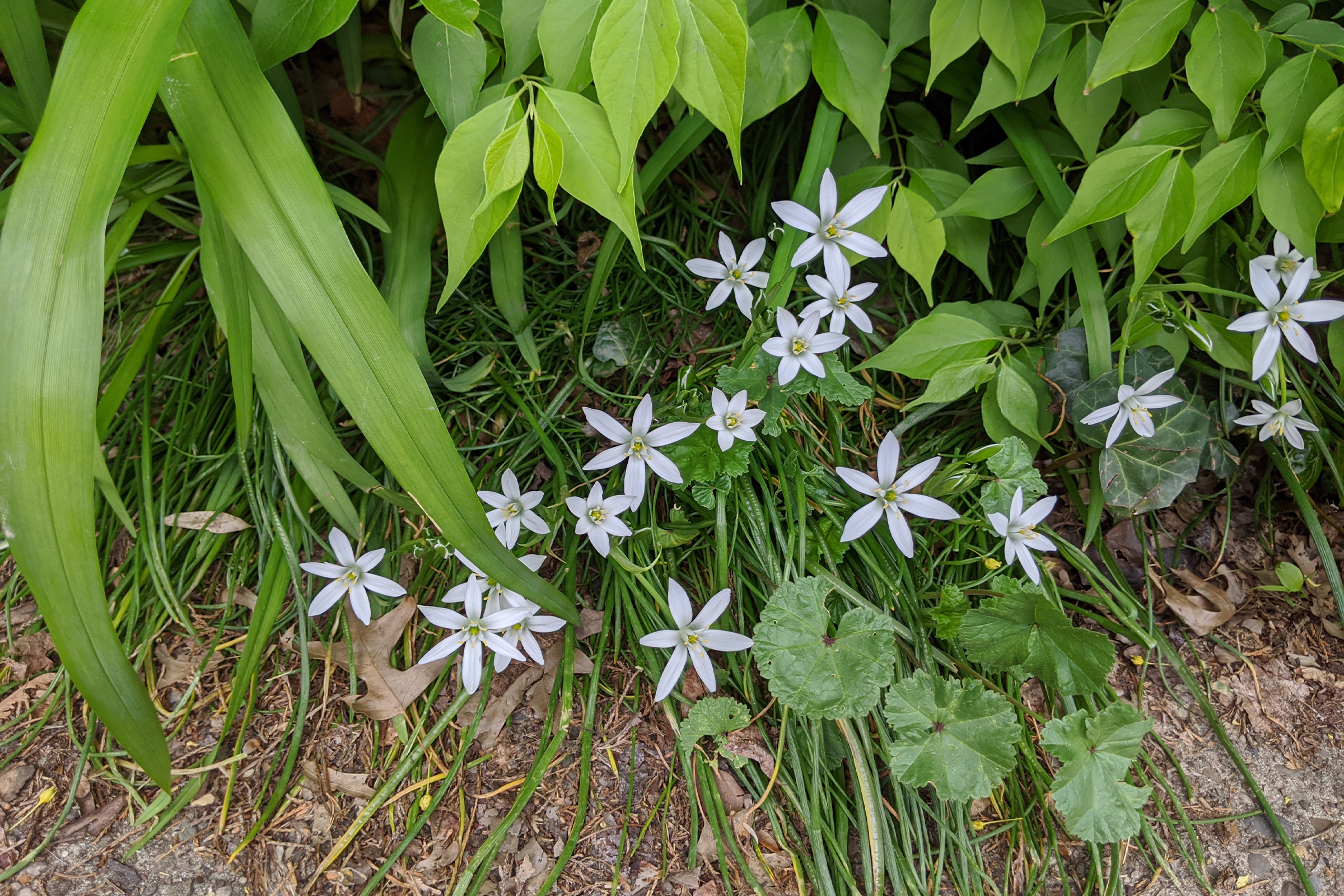
Another basal grower I found is this common star of Bethlehem (Ornithogalum umbellatum). Though native to Europe and Africa it has escaped cultivation and is now found throughout our woods where light permits. It sure is gorgeous though.
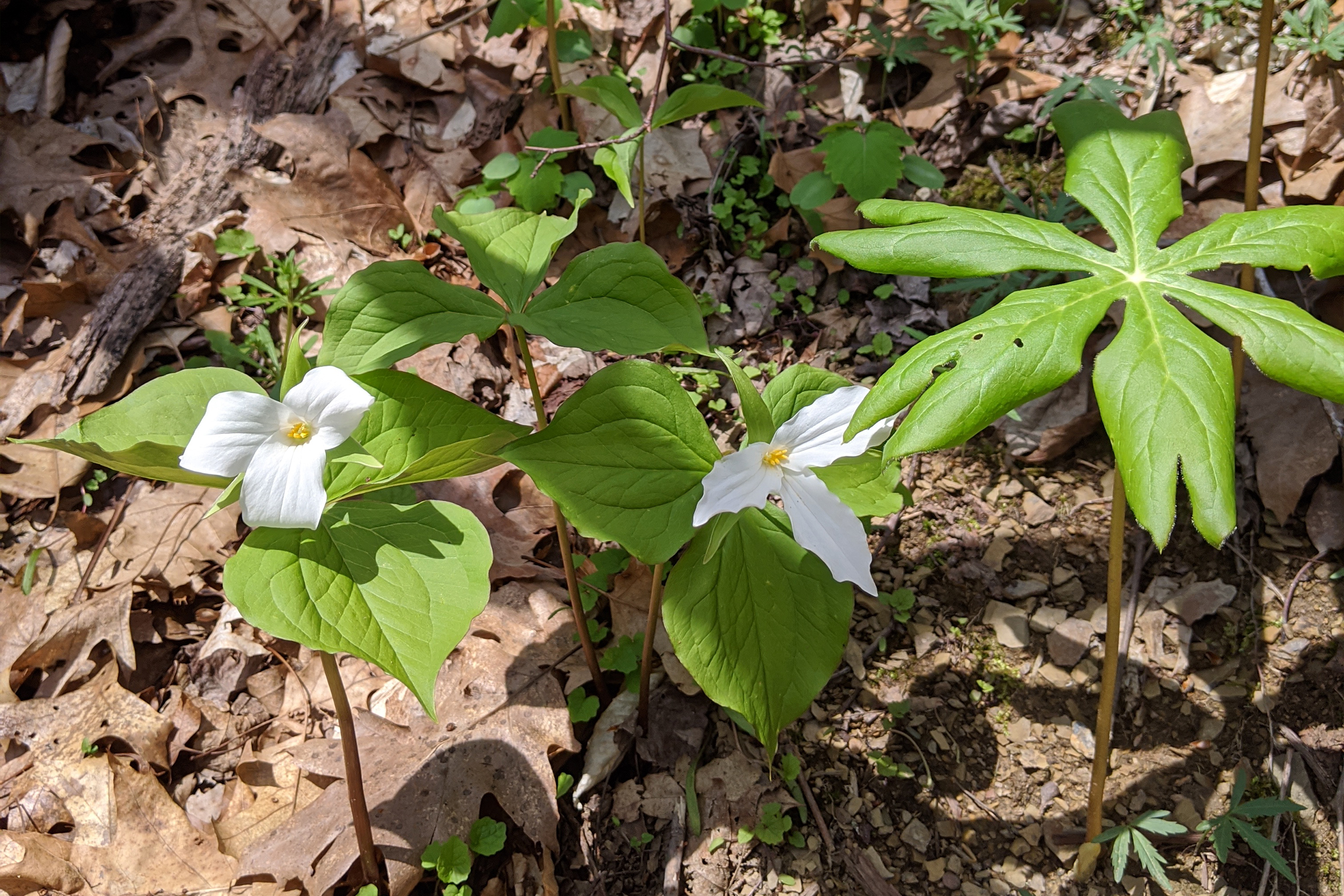
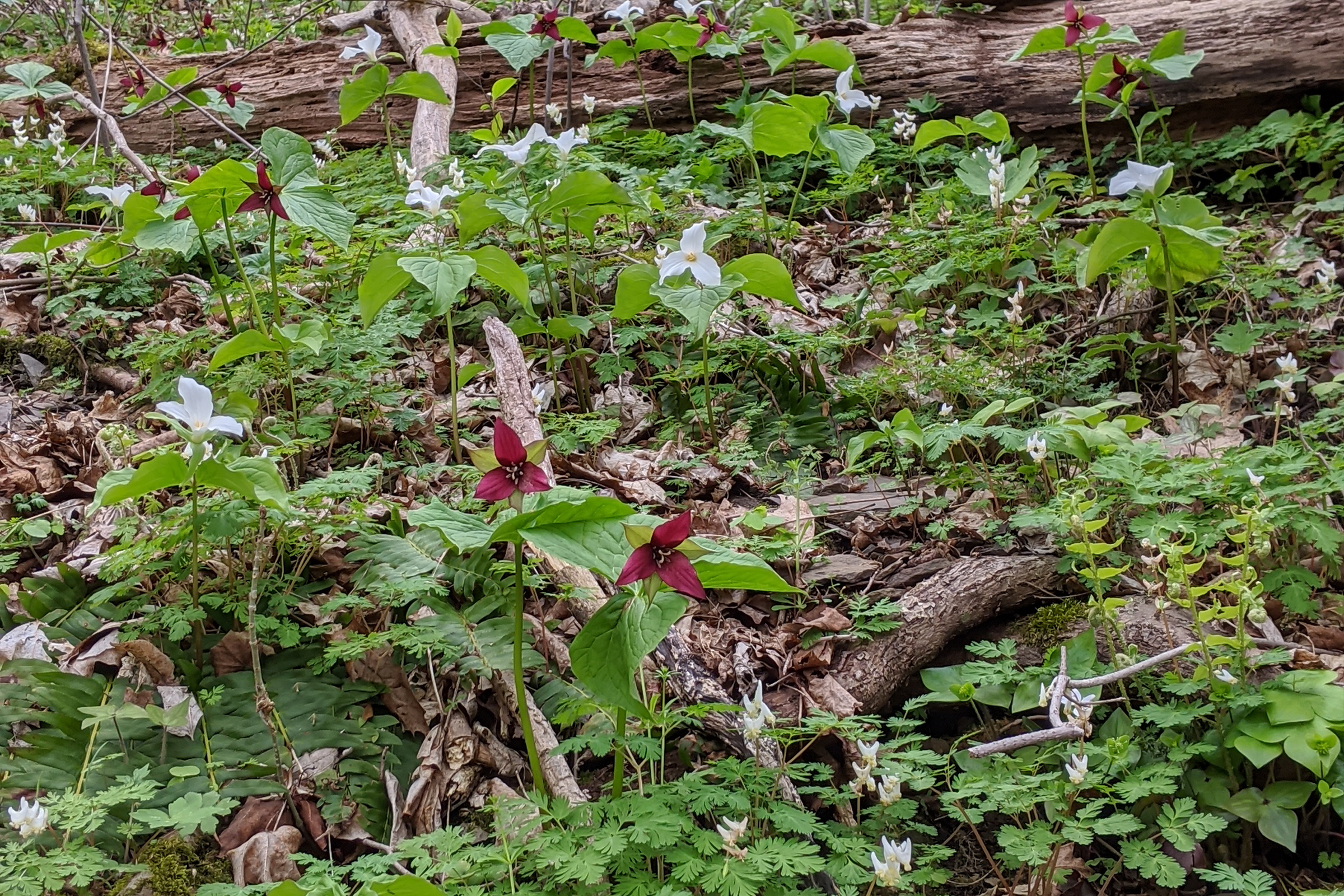
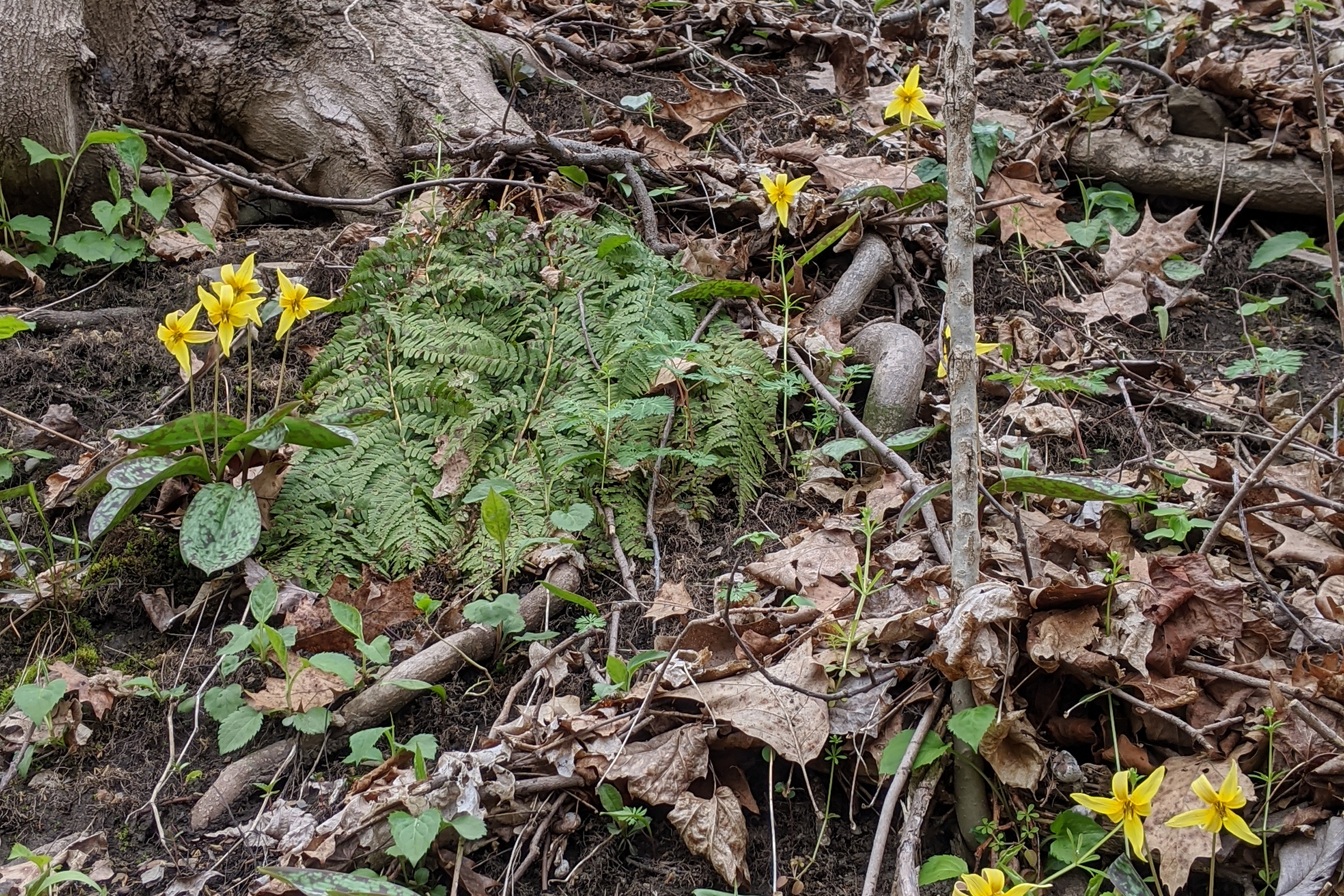
But don’t despair too much. My walk through the woods opened up a panoply of native blooms. Trilliums are still out – here pictured are white trilliums (Trillium grandiflorum) and red trilliums (Trillium erectum). These forecasters of spring have long lasting blooms. While they’re still out they remind us that morel mushrooms may be blooming nearby! Around the red trilliums in the picture find a whole cluster of Dutchmen’s breeches (Dicentra cucullaria). A bit further down, the whole hillside is covered in yellow trout lilies (Erythronium americanum). The wonders abound.

In the park I found these short white blooming trees. Upon closer look I realized these were hawthorns (Crataegus spp.)! Hawthorns are all native to the northern hemisphere but you can find species from across that range around here. I’m not sure which species this one is, but it has wonderful white blooms.
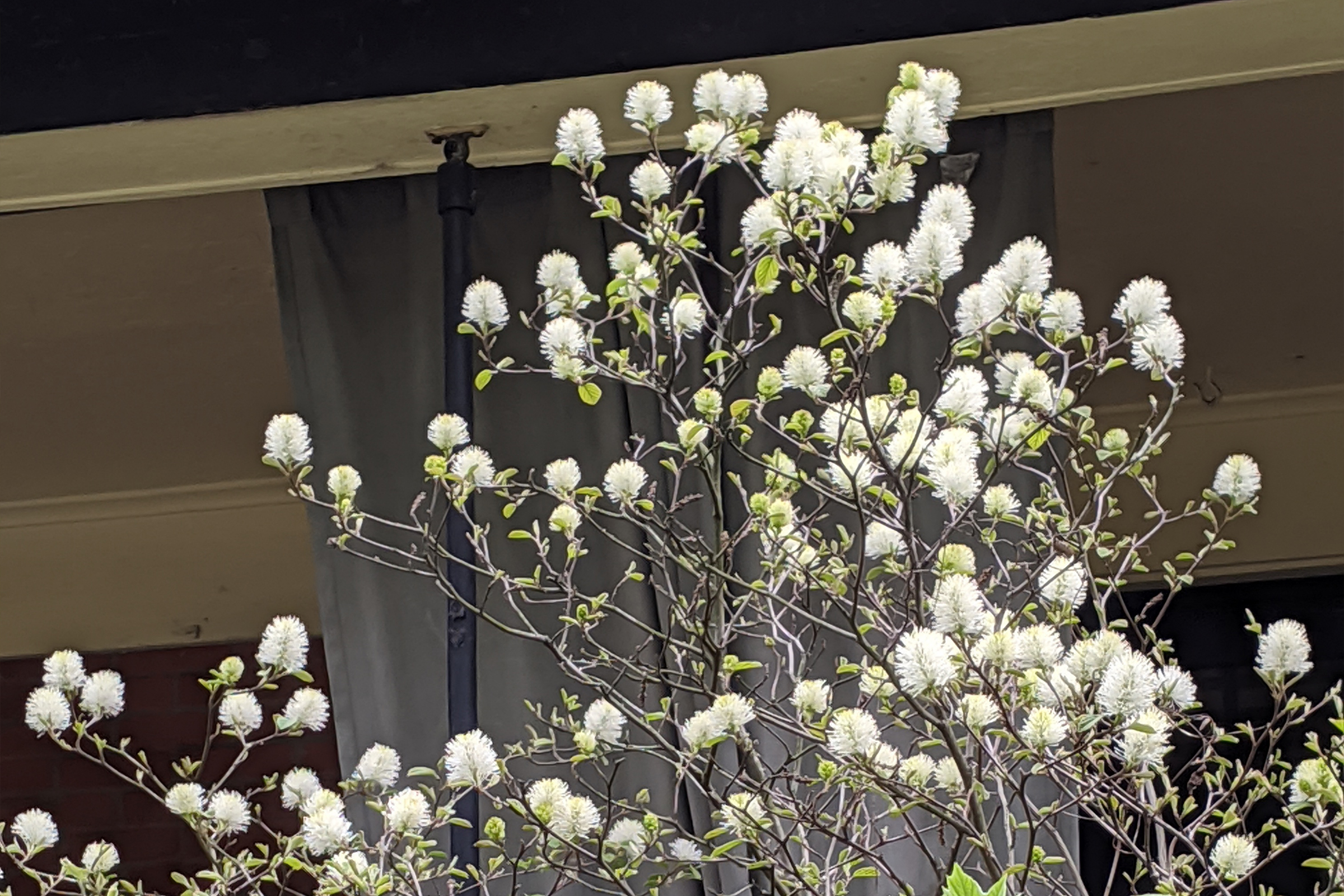
Another gorgeous white bloom you may spot is one of numerous types of Fothergilla spp. This shrub has bottle brush like flowers blooming now. The flowers emerge before the leaves are fully out, giving it a wonderfully strange appearance.
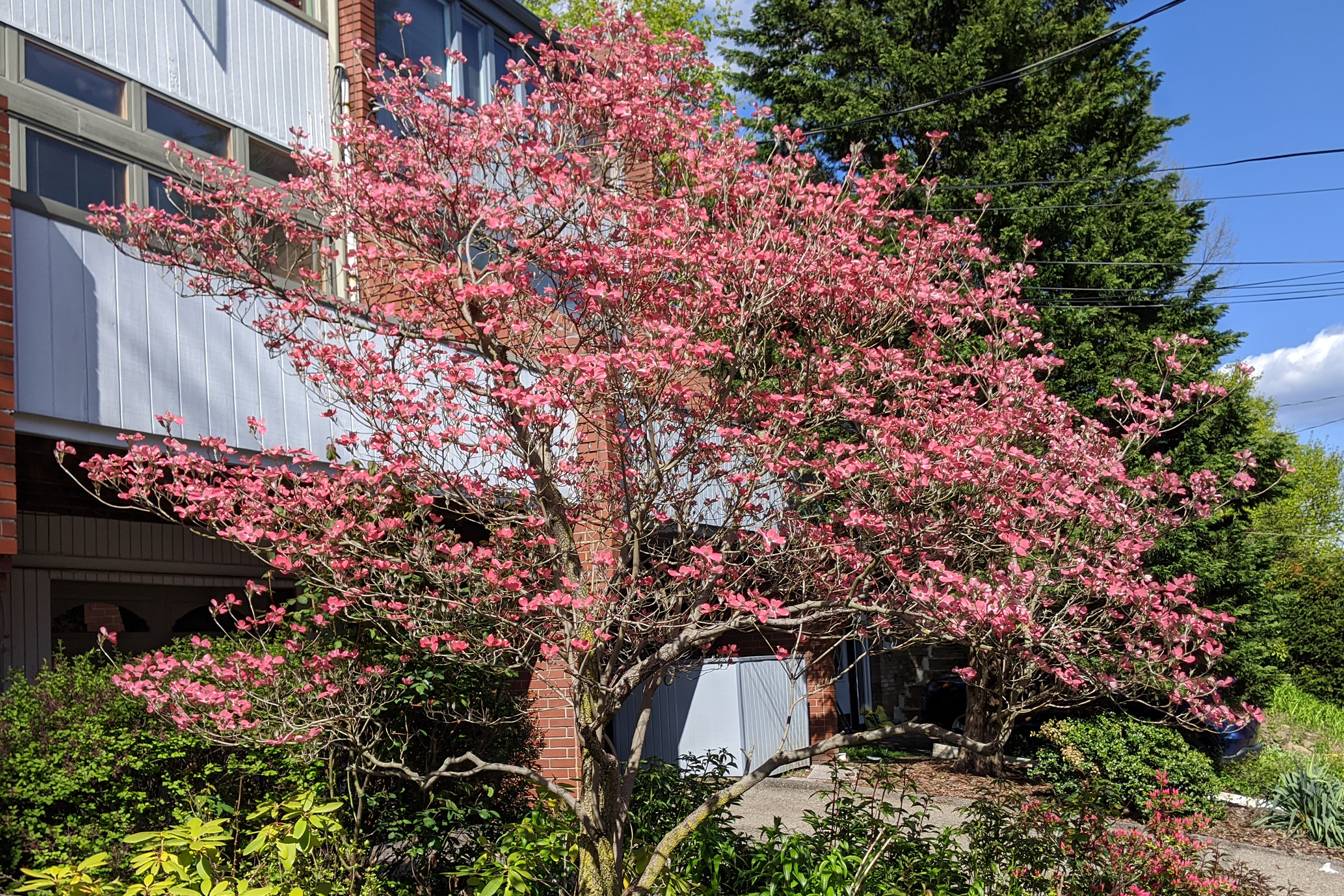
Kousa dogwood (Cornus kousa) is an Asian native that is a common landscaping tree. The two most common colors seen is white and pink. Here is my favorite kousa in the neighborhood. I like its form and how its blooms fill it out. I walk by it every day.
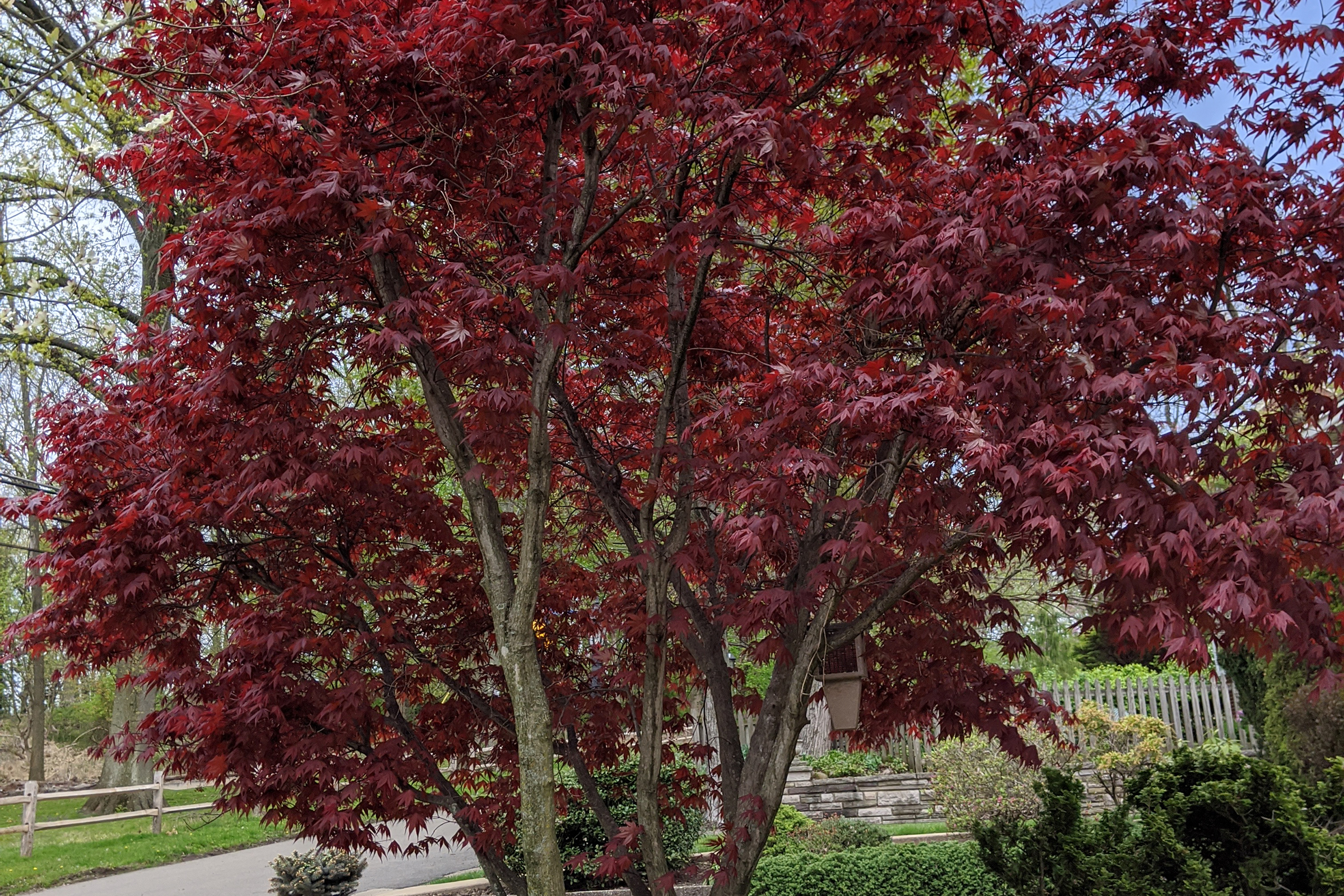
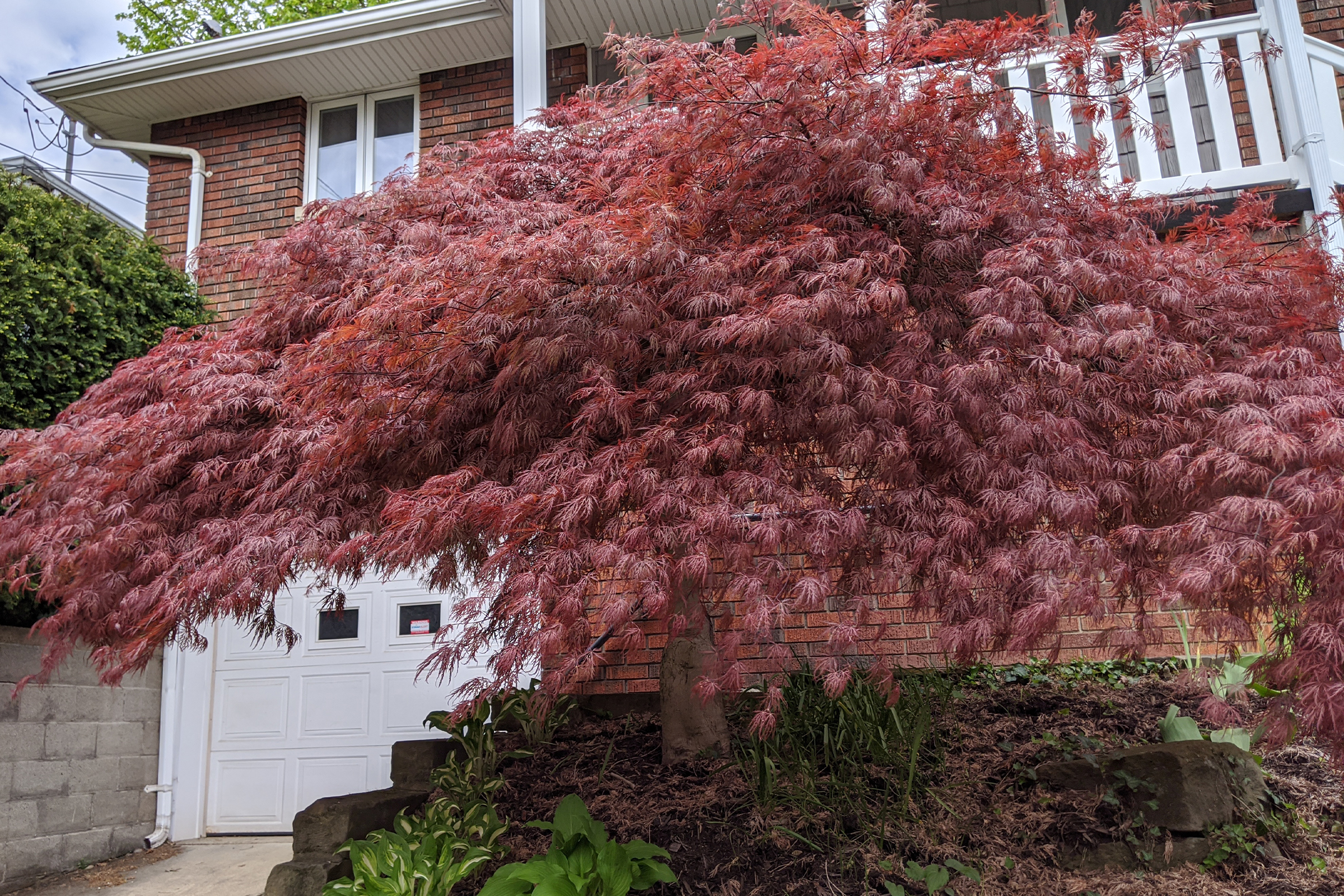
Finally, one plant I wanted to point out whose blooms are not its stand-out characteristic. Japanese maples (Acer palmatum) come in many forms, but two that are common in yards within my neighborhood. The tall larger leafed variety has a deep burgundy color while the shrubby deeply lobed leaves of another pour over raised beds. I love these trees because you can shape them into anything you desire them to be. They provide an unusual and deep color, not dependent on their blooms, but on their wonderfully shaped leaves. Their branches are intricate and delicate. See how many cultivars you can spot around your neighborhood!

